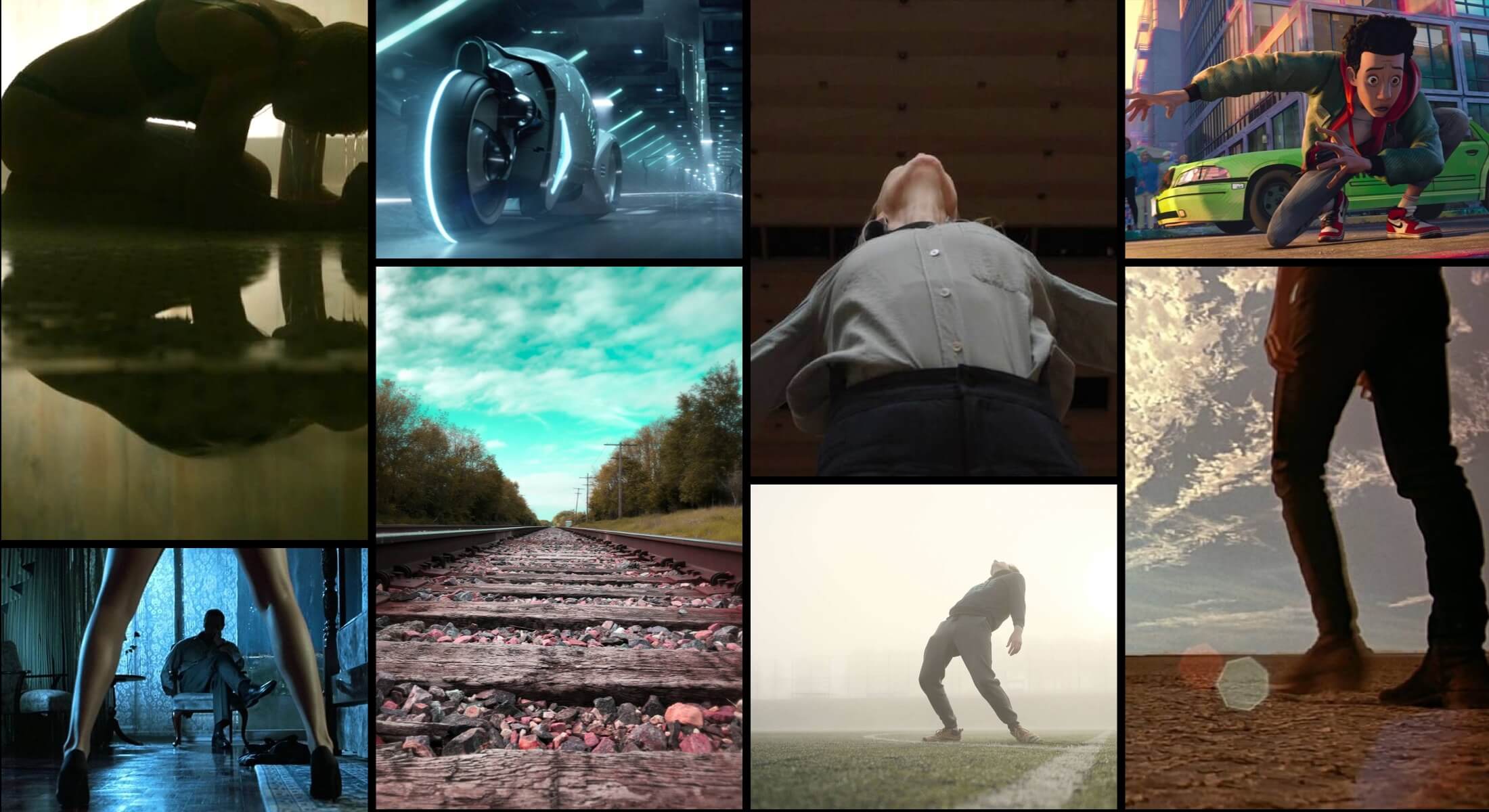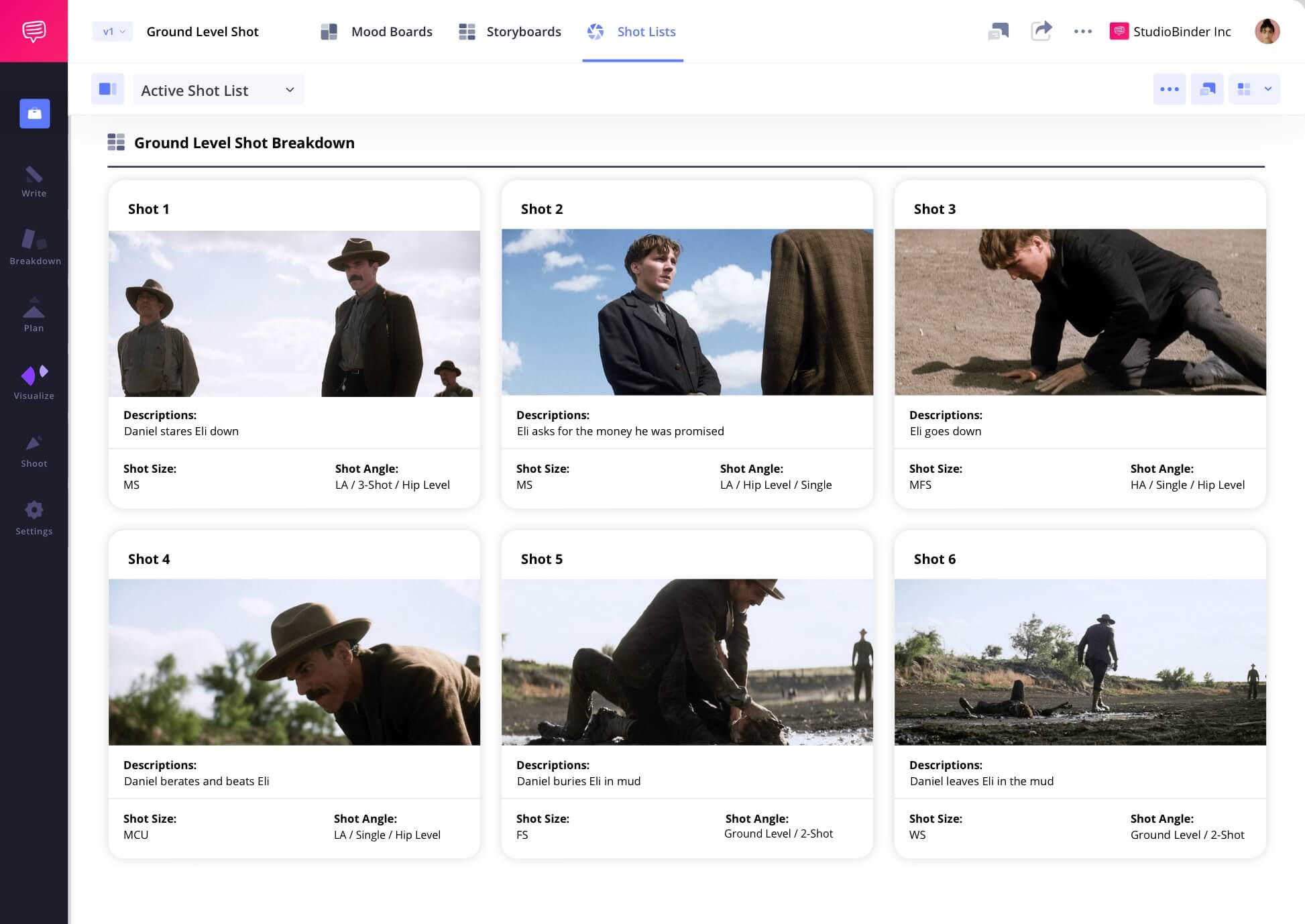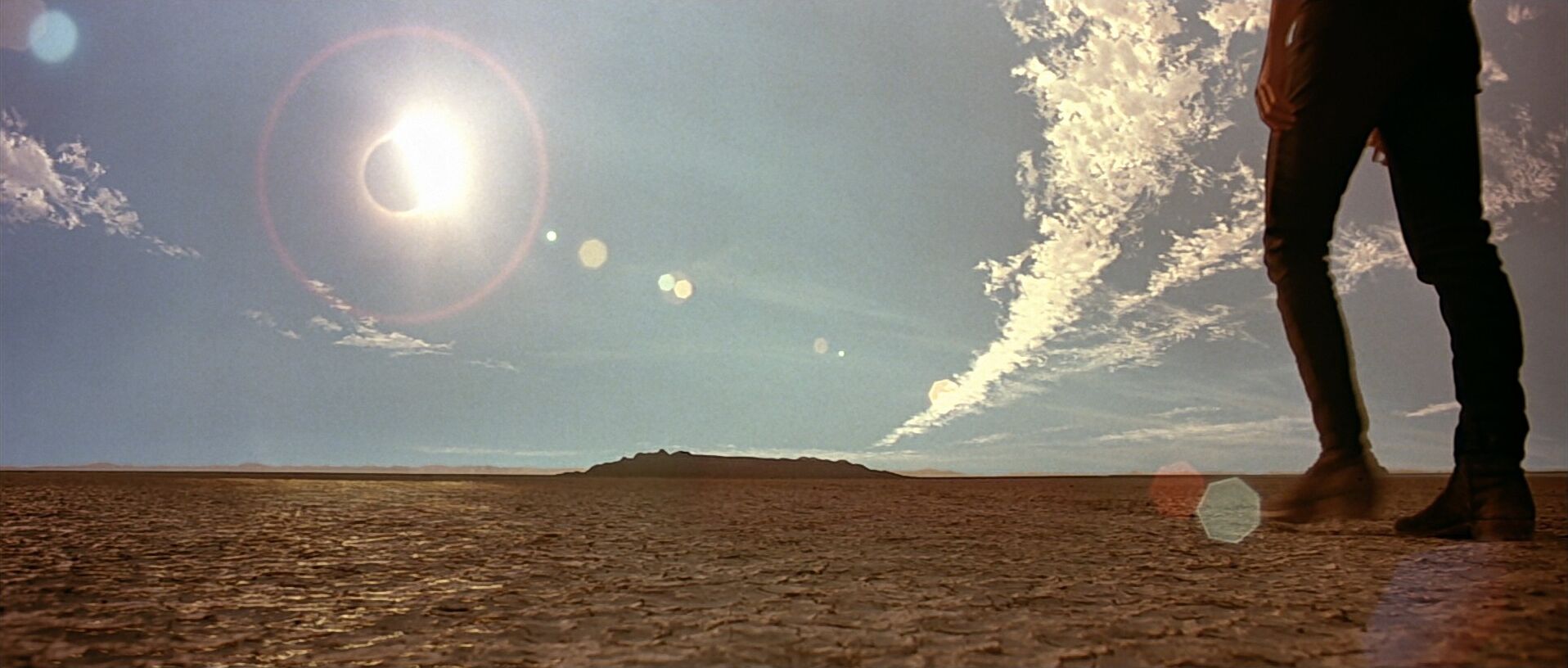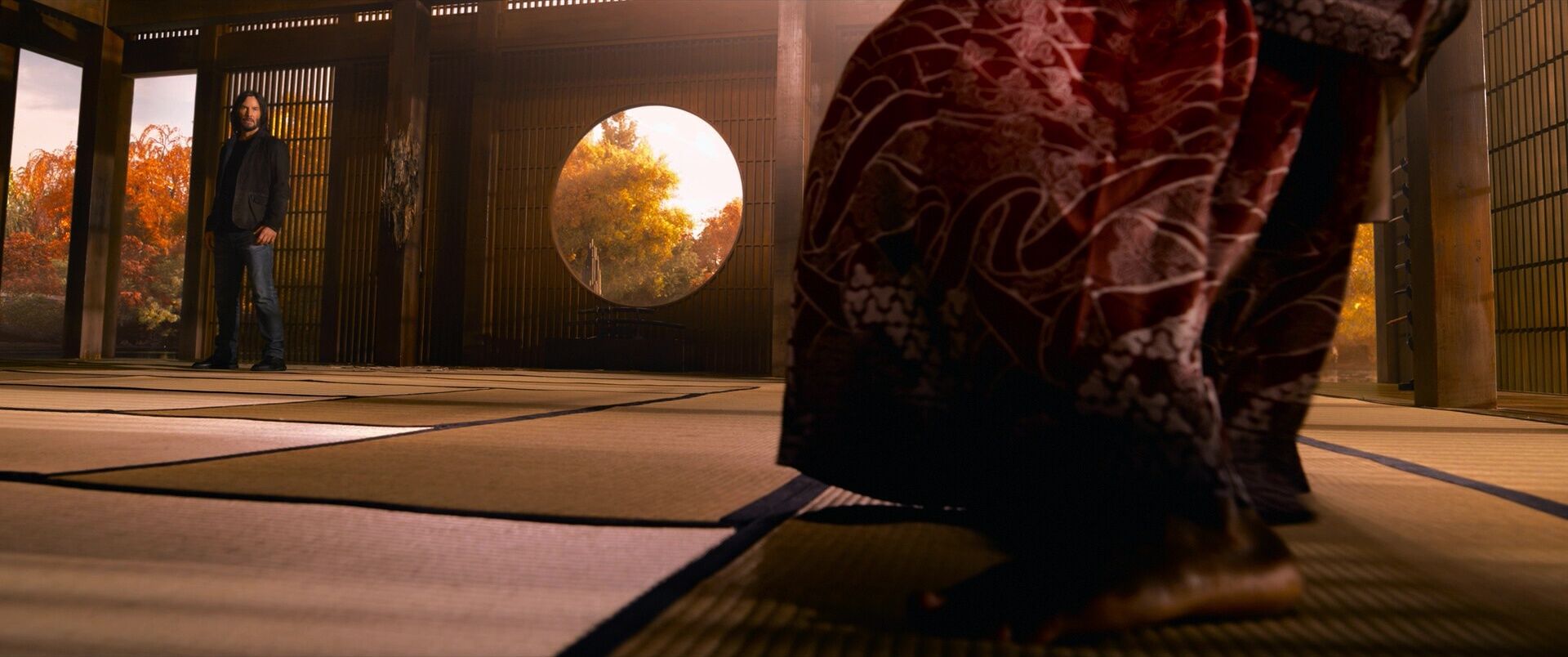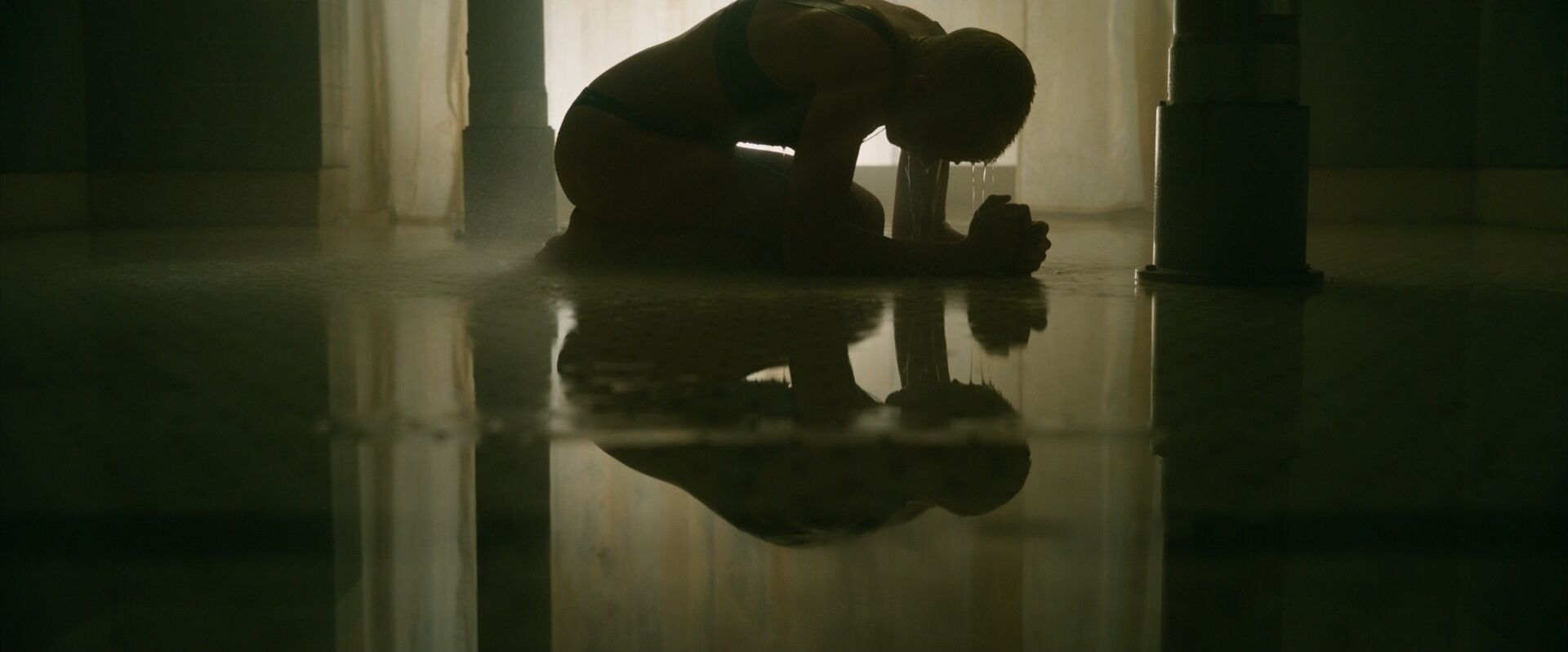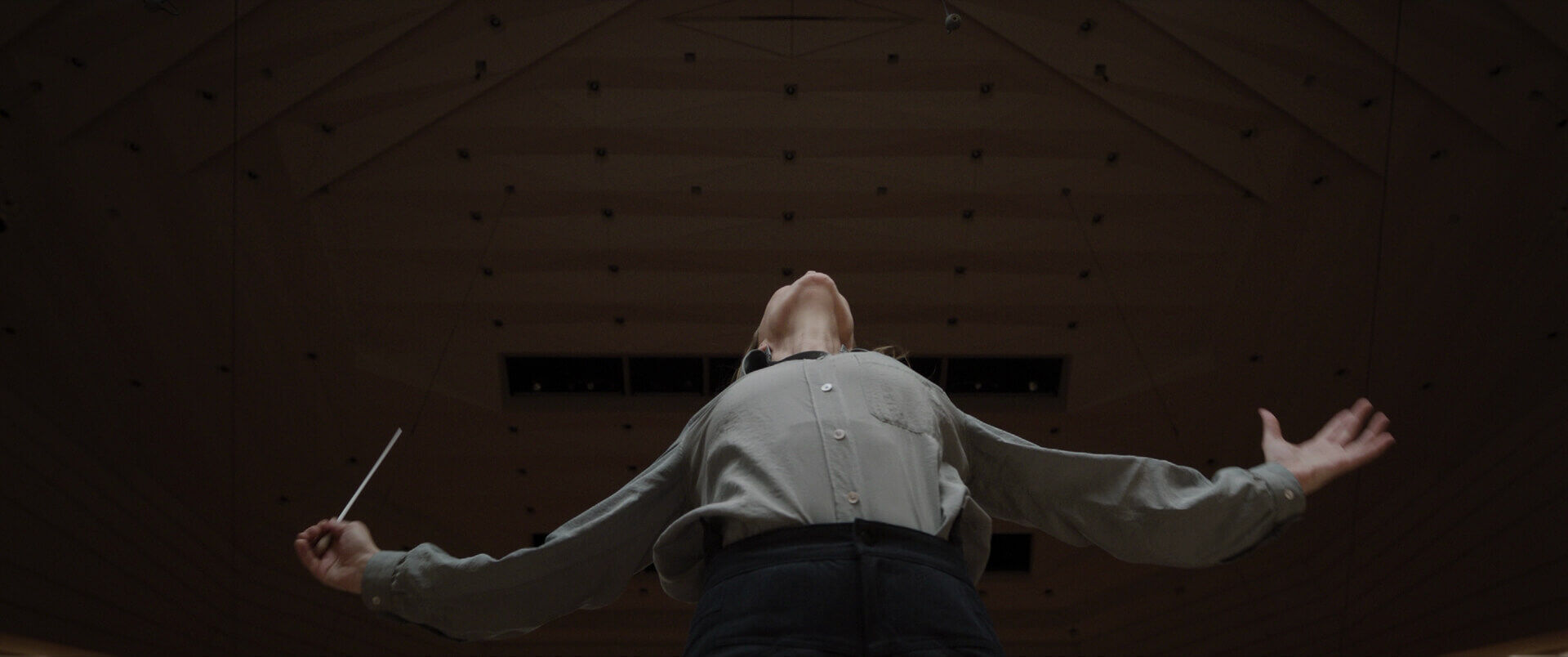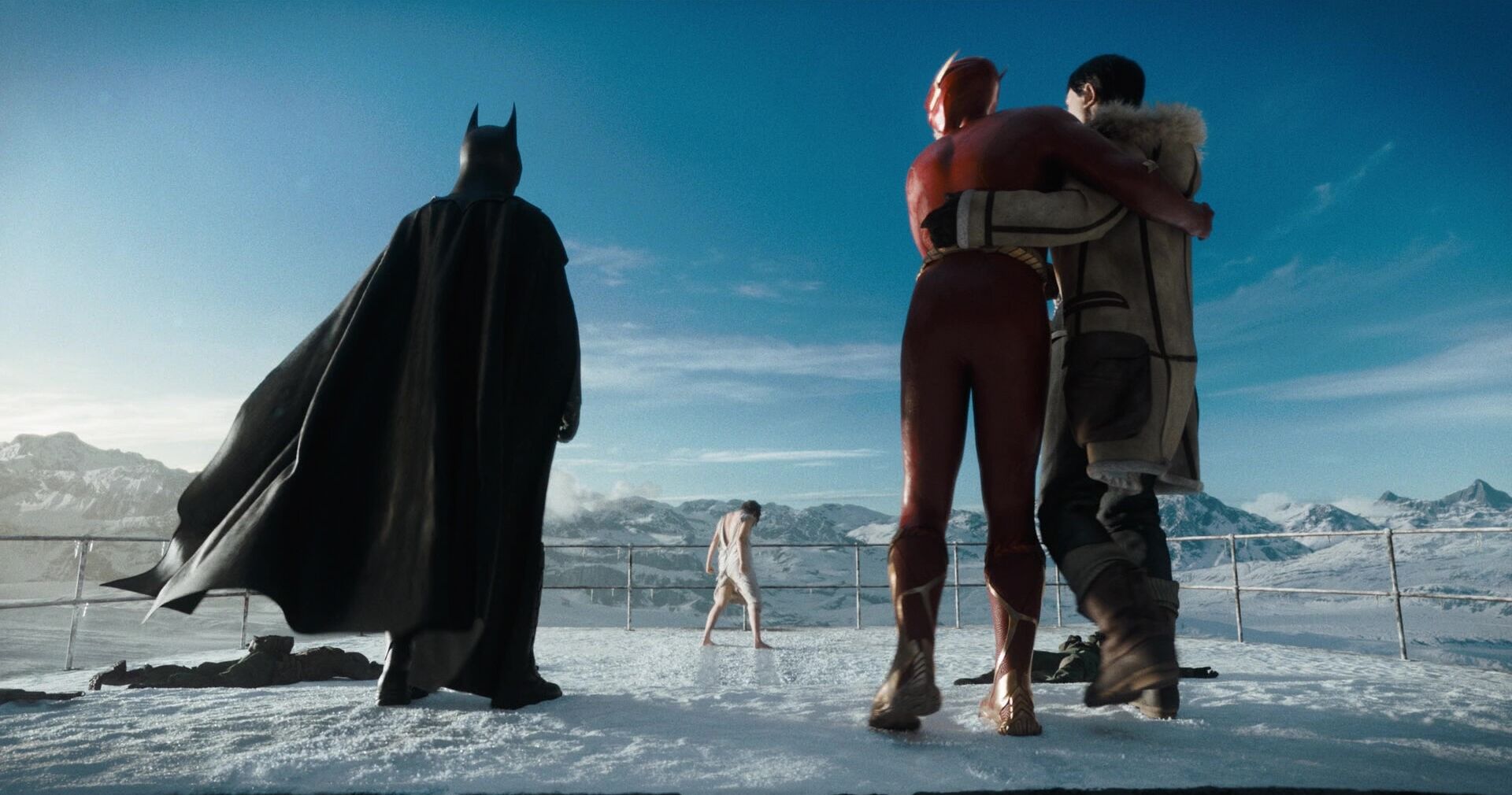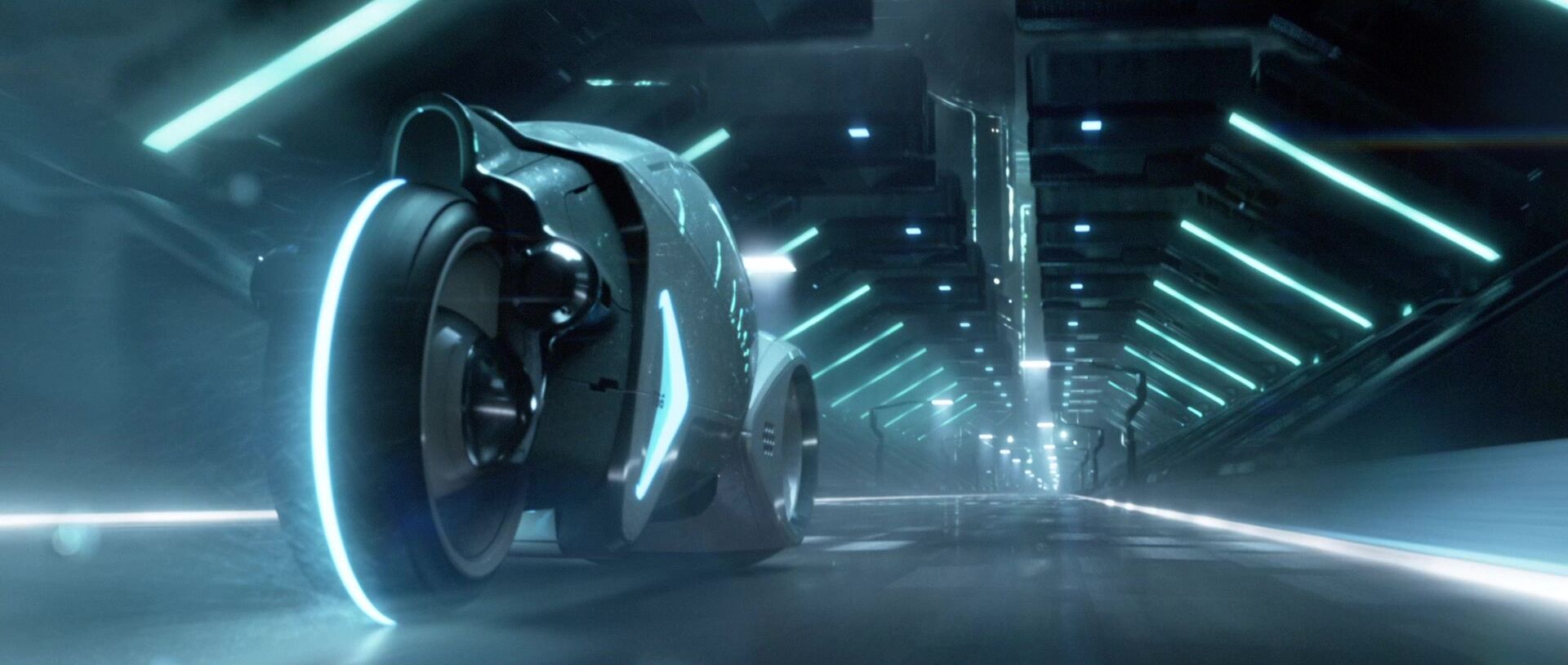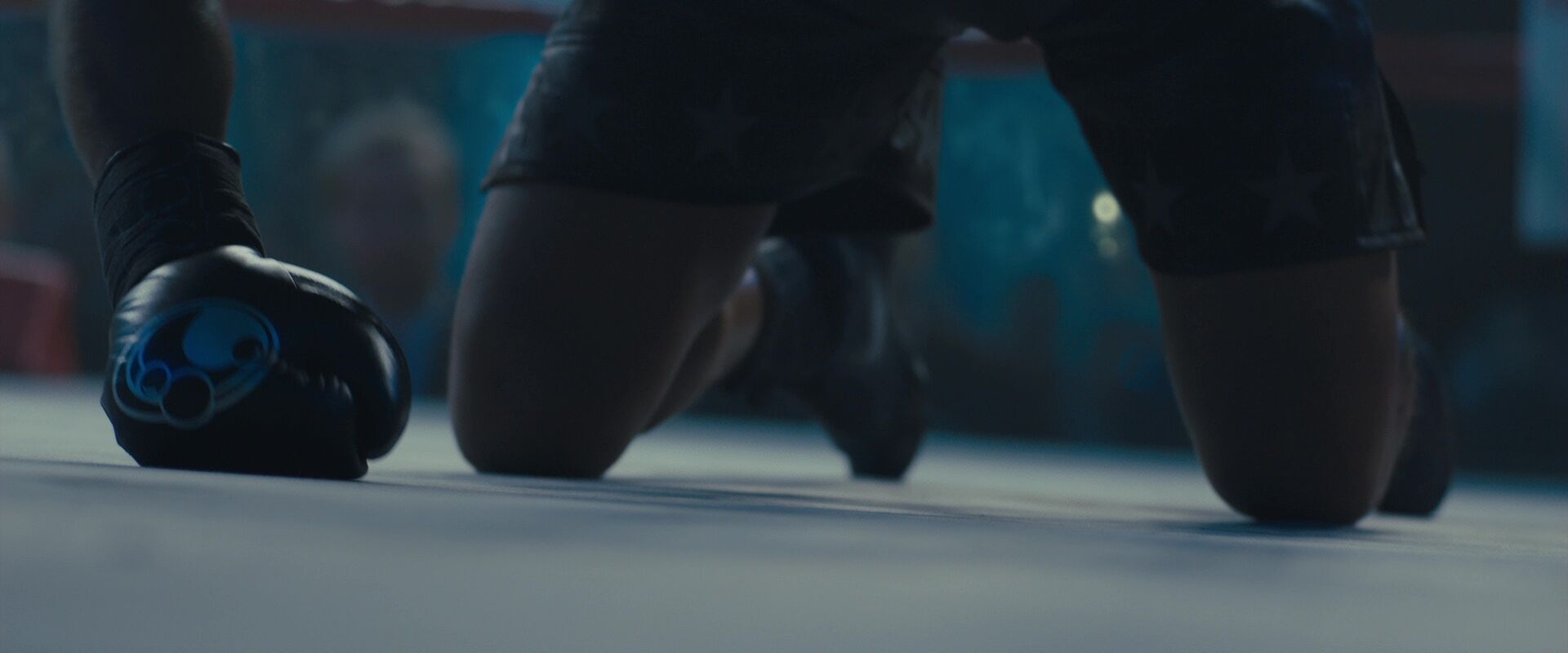home → Camera Angles → Ground Level Shot
Ground Level Shot Definition
What is a ground level shot?
A ground level shot places the camera directly on or just above the floor, offering a view from the ground up. This unusual vantage point doesn’t reflect how we typically see the world, giving it a distinct visual impact. Instead of presenting characters or scenes from a human perspective, it emphasizes scale, texture, and presence, among other things.
For more, read our full breakdown of the ground level shot, including examples that illustrate the various functions.
Meanings & Purpose
Ground level shot examples
Get a feel for how ground level shots operate by browsing this curated gallery of examples. Seeing them in action reveals how this low-angle perspective can heighten atmosphere and shift the viewer's experience in striking ways.
Alters scale and presence
Draws attention to feet or surface texture
Introduces a sense of vulnerability
Puts the viewer in an unsettling visual position
Usages
What does a ground level shot do?
Ground level shots are less conventional than eye level framing, but that’s exactly what gives them their impact. By putting the camera on the floor, these shots create a perspective that feels unusual, often stylized or even loaded with meaning. Here are a few ways ground-level shots influence mood and storytelling.
Heightened tension
Filming a confrontation or moment of suspense from ground level can amplify unease or prepare ourselves for a physical sequence.
Power play
Looking up from the floor exaggerates the height and dominance of Character A, making them appear imposing or untouchable.
Environmental texture
A ground-level perspective can showcase physical details to a scene and giving a full look at the environment from the ground up.
Unexpected intimacy
Lowering the camera can create vulnerability. This angle can draw attention to fragile moments when a character feels low themselves.
Qualities
Ground level vs eye angle shot
Eye level and ground level shots offer two very different visual experiences, both in perspective and emotional impact.
An eye level shot positions the camera directly across from a character’s eyes, offering a straightforward, familiar view. It tends to feel neutral and balanced– ideal for conversations, emotional accessibility, or realistic tone. A ground level shot, by contrast, drastically alters the frame. Rather than inviting eye contact, it can create distance or disorientation.
Eye level feels transparent and relatable; ground level comes with built-in stylization, calling attention to the shot itself and shifting how we interpret the scene.
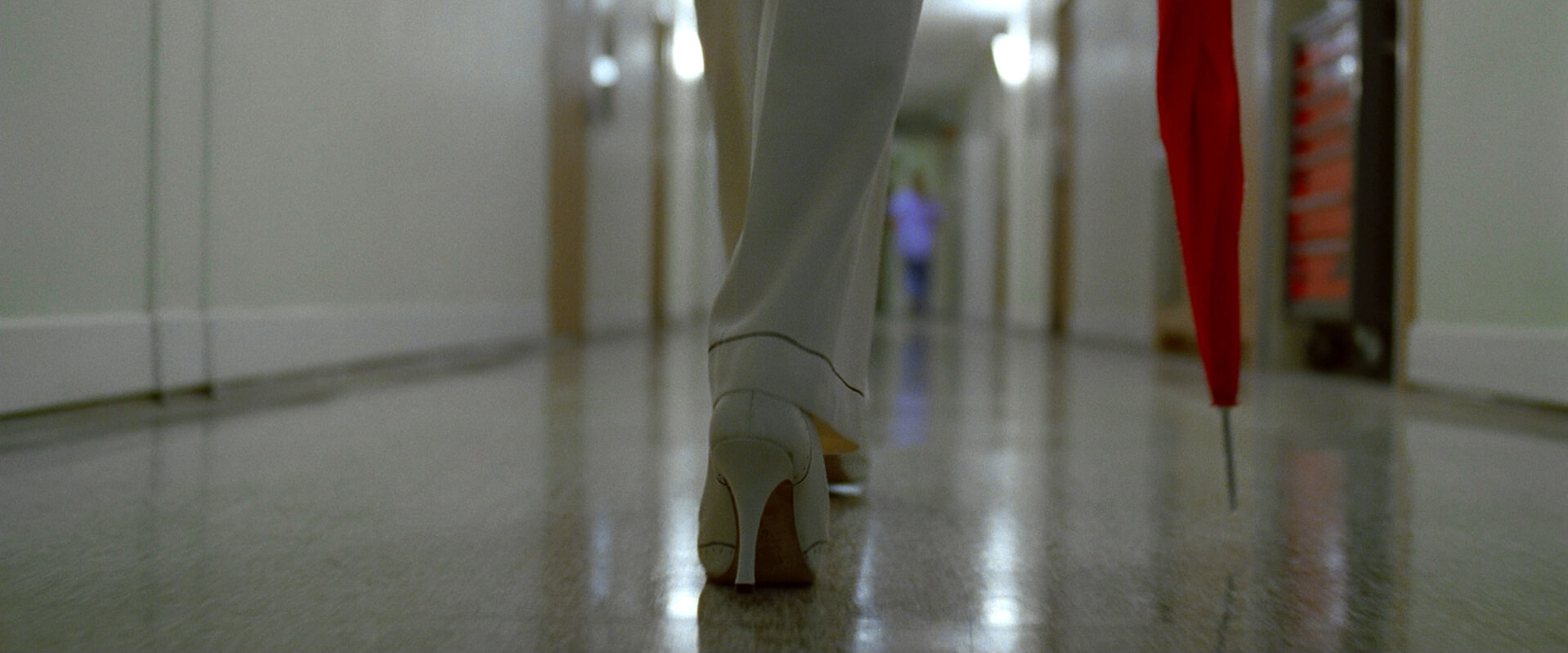
Case Study
Shot listing a ground level shot
To get a more filmmaker's understanding of how to use a ground level shot, let's look at a specific example. How can a ground level shot be used in a scene? Let's look at this scene from There Will Be Blood.
Click the shot list below, to see the full scene broken down, and notice how the height of the camera gets lower and lower as Eli is brought physically and figuratively lower.
Ground level shots might not be as common as eye-level ones, but they offer a bold way to frame a scene.
Let's take a look at how this low camera position choice can influence your storytelling.
Unique Pairings
How should you combine a ground level shot with other camera techniques?
How to pair a ground level shot
When paired with other visual tools, ground level shots can add fairly striking intensity and dynamism to a scene. The low camera angle alters the viewer’s spatial relationship with the subject. Here are a few ways ground-level framing interacts with other techniques.
- Wide Shot: Shooting a wide frame from ground level emphasizes scale and space.
- Tracking Shot: A ground-level tracking shot creates momentum and urgency.
- Slow Zoom: Zooming in from floor height can evoke suspense or unease.
- Shallow Depth of Field: A ground-level shot with shallow focus can isolate foreground details like footsteps, blood, or debris, calling attention to something you’d otherwise miss.
- Crash Zoom: Combining a fast zoom with ground-level positioning can jolt the viewer into a character's physical space.
- Low Angle Pan: Panning at floor level draws attention to horizontal motion.
- Tilt Up: A floor-level shot with an upward tilt exaggerates height and power– great for making characters, buildings, or objects feel monumental or menacing.
Frequently asked questions about the ground level shot
A ground level shot positions the camera directly on or very close to the floor. It's used to shift perspective dramatically, often making subjects appear larger. It's also useful for emphasizing surface-level details like footsteps or dropped objects.
This type of shot draws attention because it’s far from our usual point of view. It can:
- Enhance scale or danger
- Emphasize setting textures
- Highlight overlooked physical actions
Use a tripod with legs fully lowered, a camera placed directly on the ground, or a small rig like a gorilla pod. For smooth movement, try a low-angle dolly, slider, gimbal, or crane.
Use it when you want the viewer to feel closer to the physical world of the character — or farther from their emotional one. It’s best reserved for moments where perspective plays a key role in storytelling.
